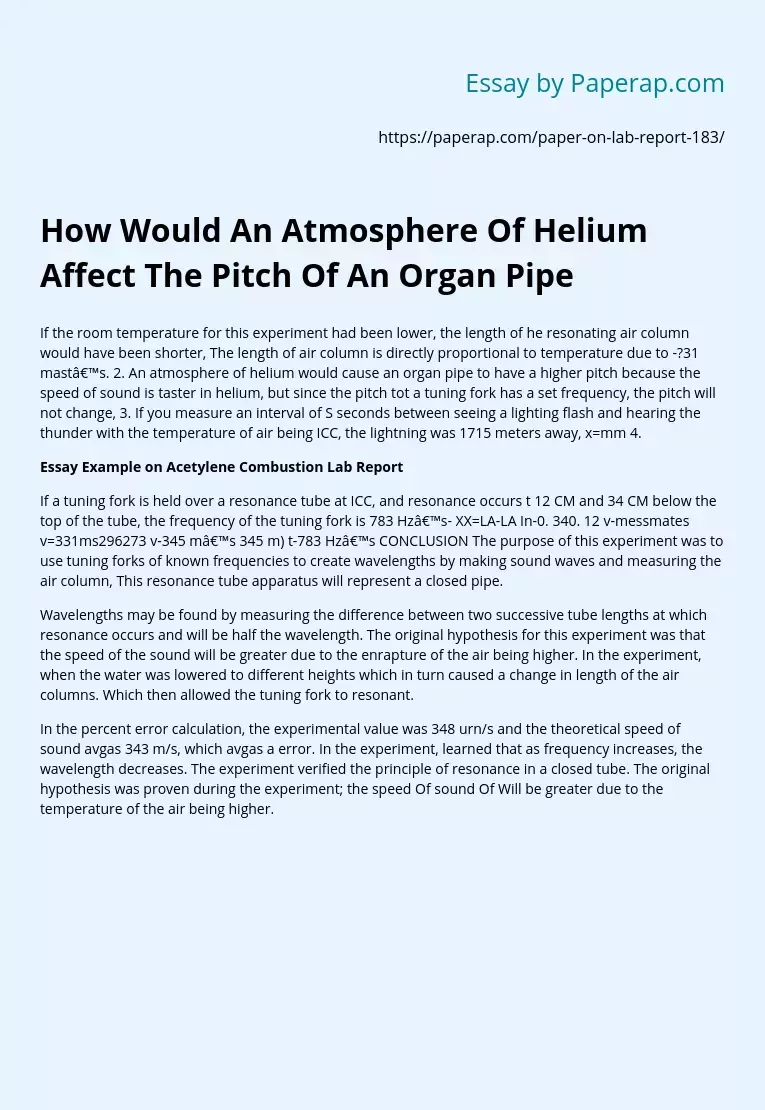If the room temperature for this experiment had been lower, the length of he resonating air column would have been shorter, The length of air column is directly proportional to temperature due to -?31 mast’s. 2. An atmosphere of helium would cause an organ pipe to have a higher pitch because the speed of sound is taster in helium, but since the pitch tot a tuning fork has a set frequency, the pitch will not change, 3. If you measure an interval of S seconds between seeing a lighting flash and hearing the thunder with the temperature of air being ICC, the lightning was 1715 meters away, x=mm 4.
Essay Example on Acetylene Combustion Lab Report
If a tuning fork is held over a resonance tube at ICC, and resonance occurs t 12 CM and 34 CM below the top of the tube, the frequency of the tuning fork is 783 Hz’s- XX=LA-LA In-0. 340. 12 v-messmates v=331ms296273 v-345 m’s 345 m) t-783 Hz’s CONCLUSION The purpose of this experiment was to use tuning forks of known frequencies to create wavelengths by making sound waves and measuring the air column, This resonance tube apparatus will represent a closed pipe.
Wavelengths may be found by measuring the difference between two successive tube lengths at which resonance occurs and will be half the wavelength. The original hypothesis for this experiment was that the speed of the sound will be greater due to the enrapture of the air being higher. In the experiment, when the water was lowered to different heights which in turn caused a change in length of the air columns.
Which then allowed the tuning fork to resonant.
In the percent error calculation, the experimental value was 348 urn/s and the theoretical speed of sound avgas 343 m/s, which avgas a error. In the experiment, learned that as frequency increases, the wavelength decreases. The experiment verified the principle of resonance in a closed tube. The original hypothesis was proven during the experiment; the speed Of sound Of Will be greater due to the temperature of the air being higher.
How Would An Atmosphere Of Helium Affect The Pitch Of An Organ Pipe. (2019, Nov 27). Retrieved from https://paperap.com/paper-on-lab-report-183/

